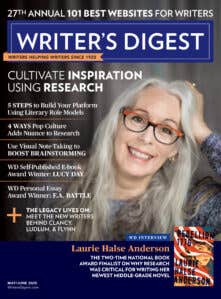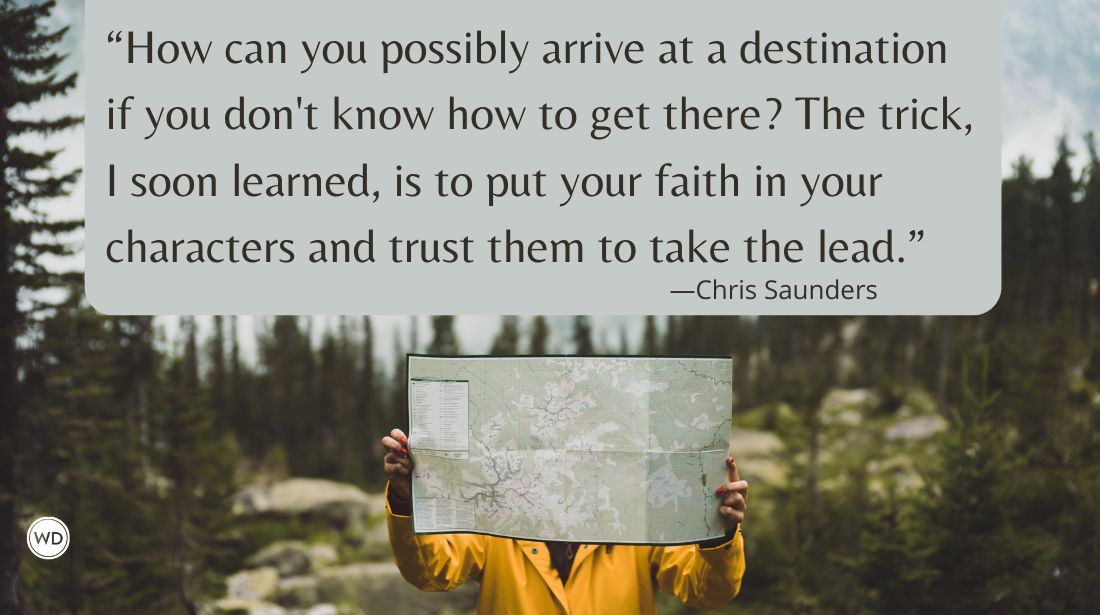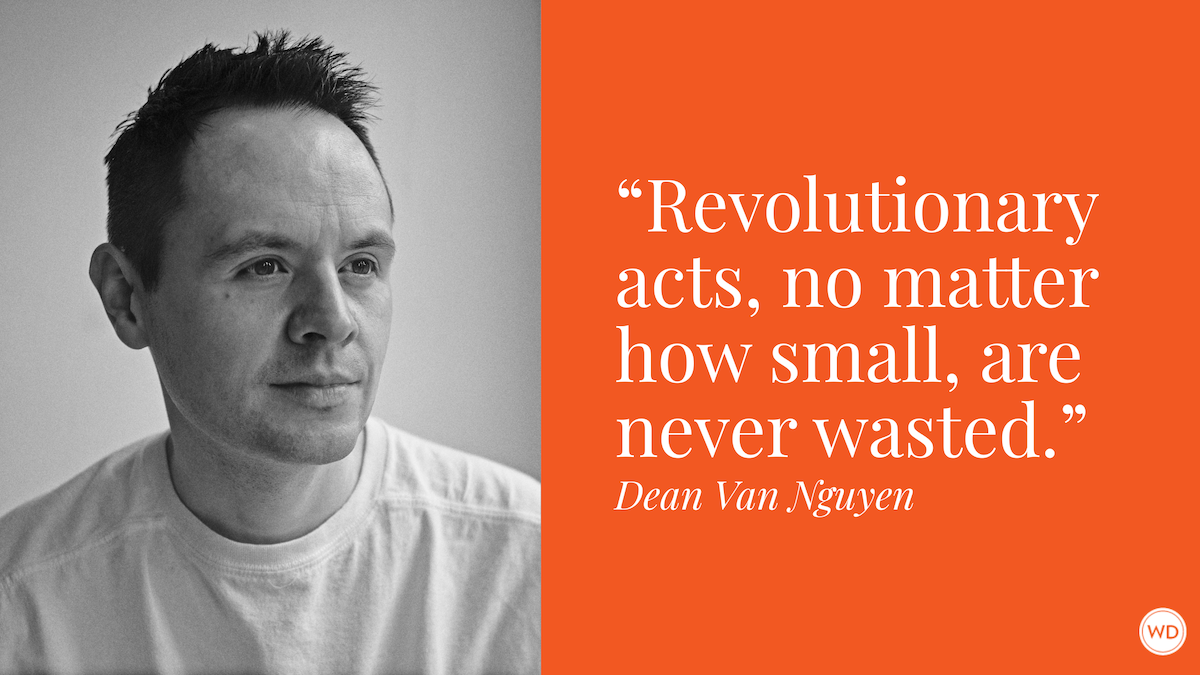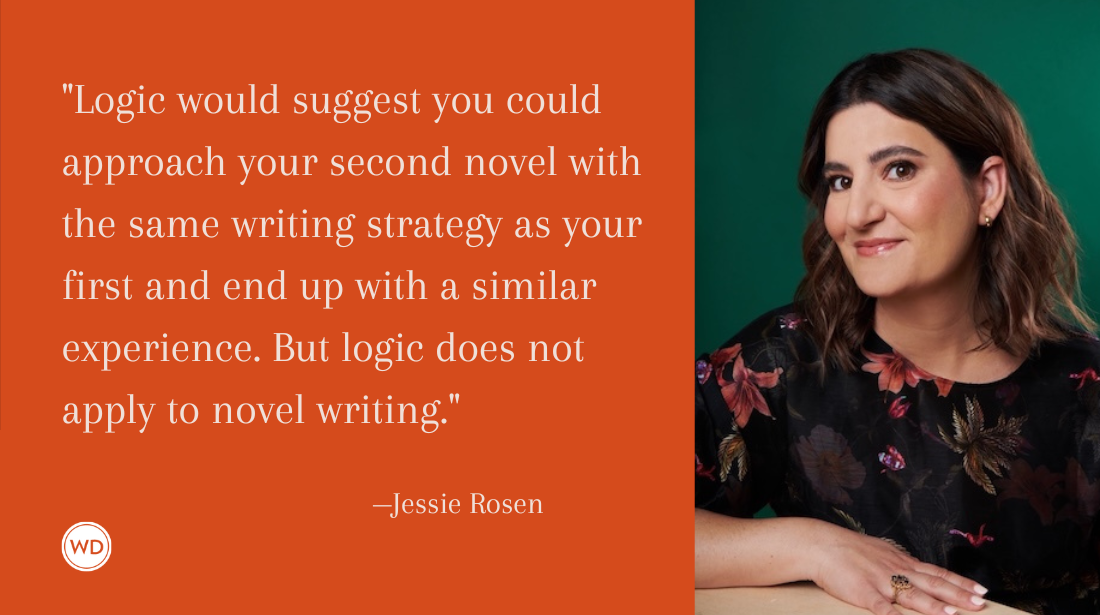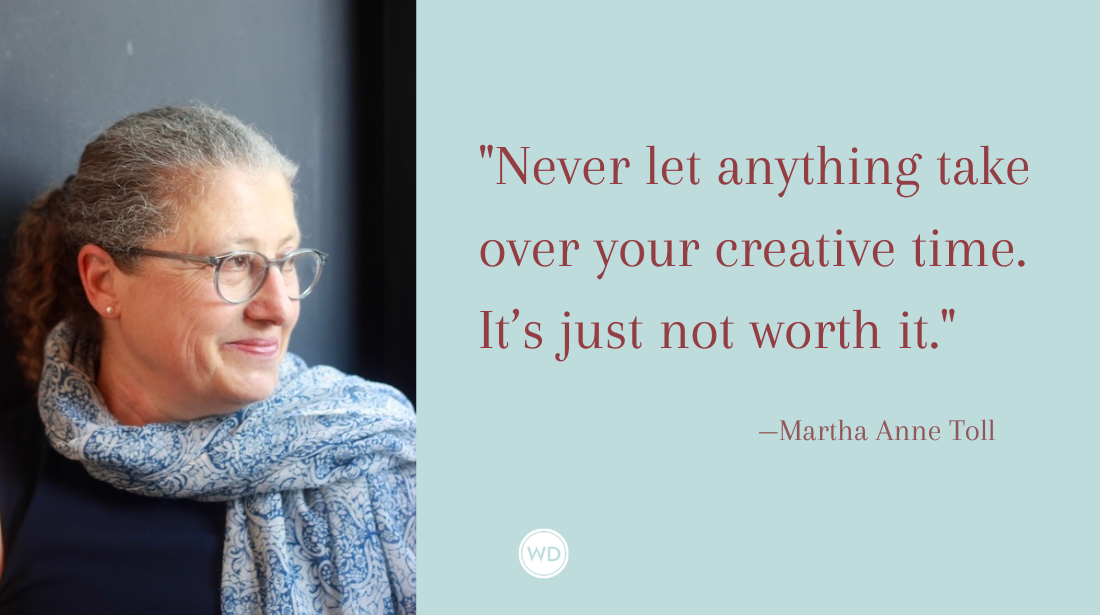Self-Published Authors Should Band Together
Today’s Q&A is with longtime author and publisher Eric Hammel, who started his own publishing company in the 1980s alongside his traditional author career. Given his 30+ years of experience…
Today's Q&A is with longtime author and publisher Eric Hammel, who started his own publishing company in the 1980s alongside his traditional author career. Given his 30+ years of experience as an author, marketer, and self-publisher, I find his in-depth perspective on the industry invaluable for anyone considering DIY options, or contemplating the future of authorship and publishing.
--
You've been self-publishing in parallel with a traditional writing and publishing career for 25 years. Why did you initially start self-publishing?
I went into self-publishing in 1985 because of a collaboration I did with a World War II Marine fighter ace who had an entrepreneurial streak and was willing to pay for me to learn how to publish and sell his book to the trade while he was off at air shows selling direct to huge crowds of aviation buffs.
I set up Pacifica Press (now Pacifica Military History) and did the thing I do second-best after writing, which is research.
How did you learn the ropes before the age of the Internet? What experience or connections were in place that allowed you to do this?
I had a degree in journalism, and I had been in public relations and advertising—running my own businesses—for most of the time between 1970 and 1983. My specialty was small start-ups. I knew how to buy graphics and printing. I had been writing books about Marines and giving freely of my time as an historian on the Marine Corps. I had friends, I had contacts in all the right places.
I knew a number of independent genre booksellers who wanted a steady supply of autographed combat books for their buff trade. That started the selling ball rolling. I printed my 800 number on the books; I made it easy to find me.
How did your publishing operation grow?
Word spread and the fighter ace was selling tons of books at air shows, all with an additional advertising reach. Pretty soon, independent booksellers and military museum shops were calling me for autographed books, and then readers began to call.
I began taking credit cards over the phone and by mail.
I stuffed a list of books into every outgoing package. I even bought and sold new books from other military publishers in order to maximize the potential of my package stuffers.
I was kinda, sorta making a half a living at this, and I was contacted by other war vets with good stories and no writing talent who wanted me to collaborate on their books—for good pay! Then I hooked up with a few authors whose books were out of print and who wanted to pay me to reissue them under my imprint.
Then one of my books, The Root, went out of print with its traditional publisher, and rights reverted to me, so I reissued it in an offset trade paper run.
I also ended up financing several promising books for first-time military history authors I thought might have a future if I mentored them. (I was right in every case.)
I funded the whole start-up operation on a $25,000 personal investment that my business (a corporation) paid back within a year, with interest. I never borrowed another dime.
But you still published your own new books with traditional publishers?
Call it a means to bring in investment capital; proceeds from these books also went into my corporation. But by 1992, I had become disenamoured with the road I thought Big Publishing was on. (It was actually worse than I thought.)
The final straw was a huge advance for a book that was orphaned when the acquiring editor was tossed from the moving bus. A trainee became my putative editor; I had to teach her her job. The book was never marketed and it reverted in a little over a year. (I continue to make an indecent amount of money from this book.)
About 10 years ago, you more or less stopped your self-publishing venture. Why?
There's an old joke small publishers tell: The only way for a small publisher to make money in publishing is to stop publishing. That's because the real money thrown off by book sales goes into buying more books in boxes.
I had twenty pallet-loads of books in a friend's warehouse by 2000, and I just got tired of the whole treadmill. I stopped buying books in boxes, stopped publishing any new books, even my own. I sold down my inventory until my friend sold the warehouse in 2002 and I had to remainder the rest.
The old joke isn't a joke. All told, from when I stopped publishing, I made a ton of money selling off my inventory, most of it for full retail or normal trade discounts, and I got to keep it all.
Tell us what you did when print-on-demand technology became available.
I first heard of what we now know as print-on-demand in 1997, when someone at Ingram told me about their new subsidiary, then called Lightning Print. By then, I was running low on several titles that frankly weren't worth the risk of even a 1,000-unit offset run. So I called a rep who seemed eager to talk with a fellow human during business hours.
The first two books I sent in were the first book I'd written in high school and a companion volume I wrote in around 1986. The learning curve was steep for all parties, but I and my cover designer got the hang of it, and then we were off.
I did not initially make frequent use of this tool, partly because the trade-off is high unit cost, which begets a compromise between high list price and low profit margin and can mean lower discounts to the trade. But sales thrived because my autograph was in reasonably high demand. I added books as needed, and after I stopped offsetting books, I moved more and more titles into print-on-demand, including a few by other authors.
I pay for all of them out of my own pocket. In due course, I stopped personally selling my print-on-demand books; I don't even offer them on Amazon. I figured out that I make more money if someone else sells a copy.
You've now transitioning about 40 titles to print-on-demand and electronic editions. Based on your years of sales history, what kind of sales are you expecting each month?
I stopped "expecting" sales back in my salad days as a publisher. Every buying decision is mutually exclusive of every other buying decision, and every title in backlist goes through cycles that are impossible to track. Last month, for instance, I sold thirty e-book copies of an old bankruptcy book (text-only edition) just on Kindle. This month, it's five. I don't worry my little head over these details. I have plenty of titles to choose from.
But, in aggregate, I typically average 50 print-on-demand sales per month. When Spielberg's The Pacific ran on HBO a few months ago, I sold around 50 copies in all that month and the next of the three relevant titles viewers could be expected to buy. A documentary released in the spring has produced 30 or 40 Kindle sales of the relevant title over each of the last three or four months.
E-books are on a fairly steady upward curve. I began uploading to Kindle in May 2009. I haven't sold fewer than 200 units in all since 35+ titles were up in around August 2009, and I have cracked 500 in a month in aggregate.
All forty of my titles are up on Sony. The first full quarter, Q2, threw off 18 percent of the Kindle s
ales. My first full month on the Apple iPad store, July 2010, threw off 20 percent of my July Kindle sales. This is expected. Sony is second tier and there are far, far fewer iPads out there—for reading—than there are Kindles. And Apple excels at keeping their store a secret, so there's no way to browse it while a buying decision is being made. Super dumb marketing.
If the POD and e-book ships continue to sail—especially if traditional bookstores give way to the Espresso Book Machine model—I expect to make as much from my current crop of forty books as I need to supplement my traditional retirement income.
What have you learned in converting all of your books into electronic
format? Has it been fairly straightforward? What's the cost been like?
Are you using a service to do this, or are you going it alone?
I had to scan about fifteen books to get fully copyedited text to work with. I found a good service via the Internet—and
got great results for a fair price. Good OCR software is 99 percent
accurate, but that can be 700 random errors in a 70,000-word text. And
hard hyphens are a bitch to locate and fix, because you have to eyeball
every single hyphen in the book. And other stuff. But two dozen books
were good to go because I either set the type or recorded copyedits and
proofing before final type was produced.
You can upload Word docs to Kindle. It took awhile for my inner
typesetter to adjust to minimal formatting, but that exercise set up all
my titles for easy conversion to epub formatting for Sony and Apple
(which I reach via Lightning Source). I uploaded fully typeset Adobe
Acrobat PDFs to the Google Partners intake and epubs to Google Editions.
Working with Word 97-2003 files In Word 2007, I use the free Aspose Word to Epub Converter,
which netted me 37 passes of 40 submissions to the Apple intake and
seemed to work fine for Sony (which did some reformatting they never
explained).
Basically, there remains no standard e-book format, so every
vendor requires learning curve to a greater to lesser degree. For now,
I've given up on Kobo, which is the only place I needed to spend money.
How do people usually find out about your books? (Or: How do you reach your readers?) What's your best sales outlet/channel? What formats do your readers usually prefer?
I have a following going back to the 1970s. This is a really big advantage.
I have two websites: EricHammelBooks.com for all the books I've written that are in print, no matter who publishes them, and Pacifica Military for all the in-print titles I publish, no matter who wrote them. Both sites offer book descriptions, free samples, and live links to where the books reside on retail sites. The Pacifica Military site offers a free book composed of all the sample chapters. It's in Adobe Acrobat PDF and has no restrictions on passing it around.
I've set up an Amazon author page and am in the process of exhaustively tagging all of the books I have on Amazon, including those of mine from other publishers.
I write articles in military history publications to gain name recognition with readers of new generations. Most of the articles are excerpts from my books.
I used to do a lot of talking-head appearances on TV documentaries, but I quit. The clowns they send to interview experts are never prepared and no one cares about facts.
I used to do a lot of seminars at Marine Corps bases, but I hate the travel.
I have a personal Facebook page with an album of all my own books, including links to EricHammelBooks.com. I tried making the rounds of pages where military readers can see my presence, but that's not me. I do very little to encourage friending and am frankly conflicted about even being on Facebook.
Each of the Pacifica Military History books—PODs and e-books—has links to my sites embedded on at least the copyright page.
I look on Scribd and the Google Partner program as feeders to other sites where sales are made.
So, what's next? Any new titles?
I
hope and have the time and energy to add titles. I have added a dozen
books by professional writers I know who can't or won't do it
themselves, and I'll consider adding books by people I don't know as
long as they're in most nonfiction genres, if they're otherwise out of
print and properly reverted, and if I like them and think they have a
chance. For e-books, I go 50-50 with the rights holder.
Prospectively, I've signed up for the Barnes and Noble Pub-It
e-book program, which I'm waiting to hear from so I can begin
uploading. I also uploaded all my books to the Google Partner and Google Editions intake sites, where all but ten are in processing limbo. I'm also uploading to Scribd, where I expect to sell zip while getting exposure that could turn into sales elsewhere.
I uploaded seven books to Kobo before I figured out they're amiable bumblers. Right now, they're last on my list.
What's been the most critical factor in your self-publishing success? What advice do you have for others wondering if they can be successful at it?
Being there. Every time I reached a critical decision point, there was a new technology-based solution to get me across the hurdle. Or that's the way it appears in my rearview mirror. If home computers with word-processing software hadn't been there for me when I needed to get back to my dream of being a writer in 1980, I'd be sweeping floors somewhere, thinking I could have been a contender.
Technological change is accelerating. All I learned about offset printing is now moot. I was content with print-on-demand until I saw my first Kindle. Print-on-demand will change; it already has, especially in photo reproduction quality, but it's not there yet. E-book options are burgeoning, but some of these schemes will fail, and there needs to be an industry standard along the lines of mp3 in music. That'll mean more revisions, more time devoted to pretty much standing still.
I know of only a few nonfiction writers whose efforts resemble my own; 99.9 percent of self-published writers I know are doing genre fiction. Most of them are completely flummoxed by the selling process, and they'd rather be writing anyway.
As I ruminate on all this and extrapolate from my own work with other writers—as their e-book publisher—I am coming to the conclusion that a lot of self-publishers will end up signing with what amount to marketers specializing in self-published books. I think this will happen because preparing books for print-on-demand and e-book submission, and selling those books, takes too much time and creative energy away from the lovely act of writing, and writing is really all a real writer dreams of doing.
Most self-publishers are mired in reinventing the same wheels most of the other self-publishers are mired in reinventing. This can't go on, and it won't, but we must insist that the sort of marketing aggregators—that I think we'll see—do not dictate terms to us; dictated terms are why we're all here to begin with.
Short term, I recommend that self-published writers working in the same genre get together to produce PDF books composed of sample chapters, up to around thirty—posted everywhere possible and easy for anyone to access, such books could easily go viral. Embedding links to wherever each book is sold is bound to garner sales over the very long term.
Anything else to share?
I finally finished and published my first novel, Love and Grace, in early 2010, something I started in around 1986 and received no encouragement from my then-agent to complete. It's a $.99 e-book and a $21.95 POD book. No POD sales yet, and I've given more free POD copies to friends than I've sold in e-book format, but we're coming even.
I cannot face any more writing about war, and I'm not sure I have another novel in me, but I keep trying novels because I'm at my peak (so far) as a writer, and I'd rather write than anything else except being a new grandfather. Life is sweet. I'm in complete control of nearly a lifetime's body of work, and of my craft. A dream I first settled on when I was twelve has come true.
My thanks to Eric for such comprehensive information on his own business as well as how self-publishers can better succeed. To find out more, be sure to visit his site.
Jane Friedman is a full-time entrepreneur (since 2014) and has 20 years of experience in the publishing industry. She is the co-founder of The Hot Sheet, the essential publishing industry newsletter for authors, and is the former publisher of Writer’s Digest. In addition to being a columnist with Publishers Weekly and a professor with The Great Courses, Jane maintains an award-winning blog for writers at JaneFriedman.com. Jane’s newest book is The Business of Being a Writer (University of Chicago Press, 2018).


